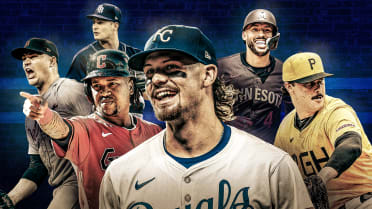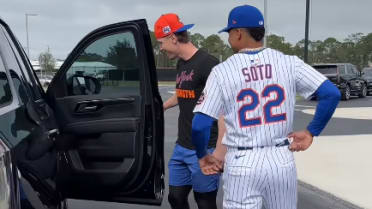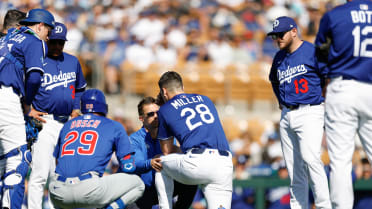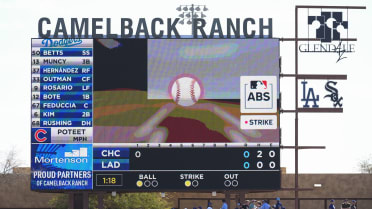7 most unexpected moves this offseason
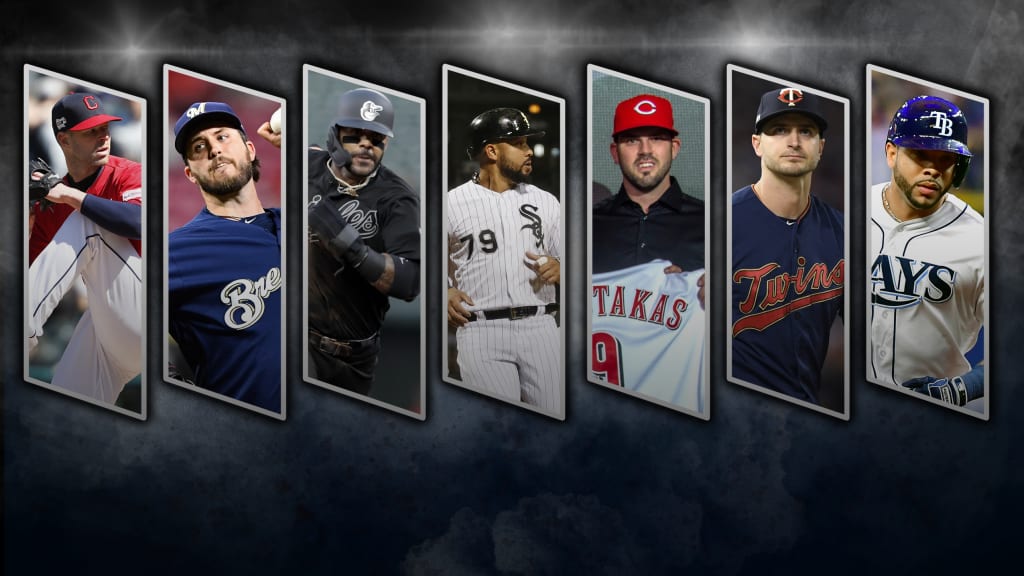
With a decent amount of offseason left, it’s unfair to get into the “[Team X] didn’t do enough!” stuff. There will be time for that, eventually.
What we’re going to do right here, right now is take a look at some individual Hot Stove happenings that stand out as more puzzling than most.
Let’s be clear: Every single one of these decisions is defensible. And in every case, I will provide the defense. But every single one of these decisions is also questionable -- and I’ll provide the questions, too.
These are the seven moves that make you go “hmmm.”
1) Reds sign Moustakas … as a second baseman
We knew the Reds would be aggressive in the pursuit of offense. And because Eugenio Suárez and Joey Votto were essentially the only names written in cement in their lineup, they had a bit of a blank canvas to work with.
Funny thing about Suárez, though: He’s a third baseman. So you didn’t expect the Reds to shop in that particular aisle. And while Mike Moustakas played at second base for 359 2/3 innings for the Brewers in 2019 and didn’t grade poorly in that limited role (0 DRS, which is average), he, too, is a third baseman at heart.
Well, Moose is a second baseman now, with a four-year, $64 million contract to solidify that standing. And this will be interesting. The Reds will shift aggressively, just as the Brewers did, so maybe this ultimately won’t matter. But this would certainly appear to be a defensive downgrade up the middle for a team that will still be really reliant on its pitching. (The offense appears to need another genuine jolt, even if Moustakas finds Great American Ball Park to his liking, as expected.)
And who knows? Maybe Moustakas would have benefited from holding out until both the Anthony Rendon and Josh Donaldson markets were settled. Because there does does not appear to be enough open-market talent to satisfy all the clubs looking for hot corner help. But after two frustrating free agencies, you can’t blame Moose for jumping at the most attractive offer early.
2) Padres give Pomeranz four years
Handing a reliever a four-year contract based on a two-month sample of success isn’t quite as extreme a commitment as that “Married at First Sight” reality show. But it’s not terribly far off, either.
Granted, the small sample was an extreme sample. Drew Pomeranz, like many failed starters before him, boiled his stuff down to its essence and saw a big uptick in velocity. Unlike many others, he proceeded to strike out 50 of 106 batters he faced after a mid-July move to the bullpen. That’s going to attract attention. And in this market, with so little quality relief to work with, if the Padres didn’t give him four years, somebody else would have.
Still, this is a move that will draw a lot of scrutiny moving forward. Because a four-year commitment to even established relief aces can be an adventure.
3) Odorizzi accepts Twins' qualifying offer
Knowing what we knew on Nov. 14, you really can’t blame Jake Odorizzi for accepting the Twins' $17.8 million qualifying offer. Not on the heels of two relatively barren winters for second-tier free agents. And in the long run, this move might prove prescient. Odorizzi won’t be eligible to receive the qualifying offer again after 2020, which means he won’t be tied to Draft-pick compensation. He’ll be 31 and, if all goes well, another strong season in Minnesota will only amplify his market.
But you do have to wonder whether Odorizzi is looking at everything that’s transpired since Nov. 14 and kicking himself. The starting-pitching market took off. Stephen Strasburg got a $245 million contract -- comparable to where many once felt the Gerrit Cole contract might land. Cole wound up blowing past $300 million in his deal with the Yankees. And plenty others beyond that upper crust did really well. Zack Wheeler's contract with the Phillies exceeded the $100 million threshold with nary a 200-inning season to his name. Hyun-Jin Ryu’s iffy injury history didn’t stop him from getting $80 million over four years from the Blue Jays. Dallas Keuchel got more palatable offers than he did a year ago and signed with the White Sox for $55.5 million over three years.
In these market conditions, Odorizzi, coming off the best season of his career, could have cashed in and eased the pressure on himself for 2020.
4) White Sox extend Abreu
What a winter on the South Side. The Sox have left no stone unturned in their effort to ascend in what could prove a winnable American League Central. And part of that effort was locking arms with one of their cornerstones in José Abreu. He’s one of those examples of a player being worth more to his current club than any other club. The Sox love Abreu for the example he sets in their clubhouse and the production he’s given them since coming over from Cuba.
But did they take that affinity too far with a three-year, $50 million contract (replacing the one-year, $17.8 million deal that came with Abreu accepting their qualifying offer)? It’s quite possible.
Abreu led the AL in RBIs in 2019 (123), but that’s not what gets you paid in modern MLB. For the last two seasons, his 119 OPS+, while strong, does not rate near the 142 mark he had averaged in the four years prior. So the $16.7 million average annual value (for a player entering his age-33 season) was a big show of faith. And in subsequently agreeing to a one-year, $12 million deal with Edwin Encarnación, the Sox have allocated a good chunk of change to two first-base/DH types, reducing their lineup flexibility.
5) Orioles designate for assignment (and then trade) Villar
We’ve seen the long-term benefits of ripping down a big league ballclub to the studs and starting fresh. And as good as Jonathan Villar was in 2019 -- he led the Orioles in WAR and hit 24 homers to go with 40 steals -- we weren’t expecting the O’s to build their next great team around him.
That said, it’s not fun when a guy has a year that good for a team that bad and still gets shown the door. Villar was poised to get a big raise via arbitration, and the O’s -- perhaps weary of potentially paying eight figures to a guy worth negative WAR in 2017 -- designated Villar for assignment and then traded him to Miami on Dec. 2 for left-handed pitching prospect Easton Lucas.
Here's how O’s GM Mike Elias explained the move: “It’s hard to let him go, but we have to keep the eye on our strategic objectives, which prioritize the future right now. When a guy is facing free agency who is set to command a large salary that he’s earned from his play, when we have the chance to use that playing time on other players, use that payroll on other players and other objectives, and then get a young pitcher back that we view as a prospect, that makes a lot of sense.”
6) The Indians’ trade return for Kluber
The Tribe dealt one of the greatest pitchers in their franchise history for reliever Emmanuel Clase, Delino DeShields and ...
Well, surely, there’s another press release coming with additional names, right?
No, no. This is it. And considering Corey Kluber is entering his age-34 season, has a lot of mileage on his arm, made just seven bad starts last year and has lost velocity and movement, the swap is not as one-sided as it might look. Kluber will make $17.5 million in 2020, similar to the average annual value Madison Bumgarner (another arm with high mileage) got in his deal with the D-backs. Kluber's trade value above and beyond the salary changing hands wasn’t as high as the “two-time AL Cy Young Award winner” pedigree would lead you to believe.
But the Indians built this trade around the acquisition of a reliever, which is always a big risk. They had other, possibly higher-upside offers on the table involving players further away from the Majors, but they wanted to impact their 2020 bullpen with the intriguing Clase and his 100-mph cutter. It’s another move in the category of defensible but bold, because fan angst will escalate if Clase, like so many talented-but-mercurial young relievers we’ve seen in the past, doesn’t pan out.
7) Rays trade Pham
By now, we all know the deal with the Rays: They’re going to cold-bloodedly assess a player’s salary compared to his production and often act on his value. Their success with this method on a modest budget speaks for itself, and the return they received for Tommy Pham and Minor Leaguer Jake Cronenworth -- the power and improved outfield defense that accompanies Hunter Renfroe and the long-term value of infield prospect Xavier Edwards, who ranks at No. 72 among MLB Pipeline’s Top 100 Prospects -- was solid, when viewed in a vacuum.
But, man, it’s hard not to enjoy Pham, who is not only brash, but can hit (134 OPS+ since coming over from St. Louis). For those of us in love with underdogs, Tampa Bay is an easy team to get behind, and Pham felt integral to a really, really good core in so many ways.
The Pham-for-Renfroe element sure looks like an offensive downgrade for 2020. And this is a time when you’d like to see the Rays try to seriously push the mighty Yankees in the AL East, as opposed to targeting trade packages rooted as much (or more) in the future than the present.
Anthony Castrovince has been a reporter for MLB.com since 2004.

